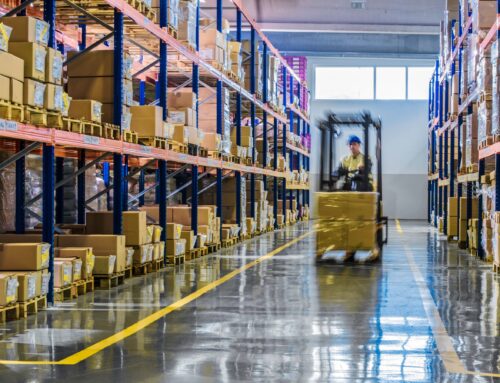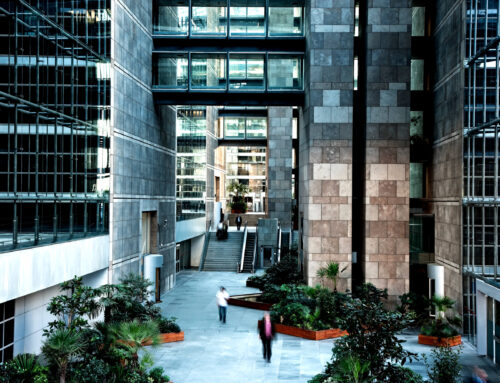Surveillance Storage 101: How To Make Sure The Footage You Need Is Always There
As a small to medium business, your camera’s live feed is likely not monitored 24/7. In fact, most commercial camera systems are checked only once stored footage needs to be retrieved. The last thing you want or need is to review important footage only to find that it was not recorded properly.
Despite this, it is amazing how many commercial security systems are not optimized for proper storage and retention.
At least once a week, we get a call from a small-medium business who says they have a relatively new camera system (installed by a different company) that suddenly stopped recording. Often, this is followed by “we can’t get a hold of the original installer either.”
Before we even visit the site, we are generally confident that it is one of a few issues that could have easily been prevented.
This brief guide will show you how to optimize your security camera system for storage so that you always have the footage you need when you need it.
How A Camera System Works:
First, let’s take a brief look at how a modern-day CCTV system works; there are four main components:
- Cameras – to capture and transmit the video feed.
- Data cables and network switches – to connect the cameras to the recording servers and carry the information there.
- Servers – to process the video feeds and record them onto hard drives
- Hard Drives – to store the data.
Now that we know what the system is made up of, we can better identify the significant errors that can cause loss of storage.
1. The Wrong Type of Hard Drive:
This is by far the most common problem we find when clients contact us that their camera system has stopped working.
Camera systems are on 24/7 and continually sending information to the drive. The drive must be designed for 24/7 use. These types of drives are fittingly called ‘surveillance grade.’
Understandably, most business owners may not know the difference, but what’s surprising is how many supposed security experts install inappropriate drives in surveillance systems. Instead of using these surveillance grade drives, they connect a regular hard drive designed for use in a desktop computer!
These desktop hard drives are meant for intermittent reading and writing, such as opening and saving files on a computer. Therefore, they will appear to work out of the box, but almost always fail to continue working months down the road.
At Square, we always use Western Digital Purple or Seagate Skyhawk Drives. Both are top surveillance grade, created by reputable manufacturers and fully capable of handling 24/7 use.
2. Not Enough Storage Space:
Camera systems are not able to hold limitless amounts of video. At a certain point, the hard drive will fill with recordings, and the server will automatically start writing over the oldest video files. How much information can be held before this begins to happen is dependent on the number of terabytes within the hard-drive(s).
We generally recommend one to three months of storage for typical commercial applications. In some special cases, industry regulations may require longer (anywhere up to three years).
Calculating the exact amount of terabytes and how many drives are needed can be tricky.
At Square, we have developed a proprietary formula specifically for this reason. Our formula takes into account:
- How many cameras the system is using
- The resolution and frames per second that the cameras record at
- How much activity the camera monitors (we compare your camera views to others on similar sites we have worked on in the past – this is where an experienced system designer is essential)
- What type of video compression is taking place and how this affects storage space
- The desired length of recorded video storage
3. Not Using RAID and Redundant Servers
RAID stands for ‘Redundant Array of Independent Disks.‘ RAID enabled servers can place copies of your recorded video across multiple hard drives. This allows a hard drive to fail in the system without loss of video.
RAID systems include additional unused drives so that when one fails, the system will “rebuild” a backup of the lost data automatically. Higher levels of RAID will even mitigate your risk of loss in the unlikely case several drives fail at the same time.
We recommend using RAID as a best practice for all critical applications.
Redundant Servers work similarly to RAID, but provide a backup server as opposed to backup hard drives. Should your primary recording server fail, this redundant server will kick in and start recording your video automatically.
For most operations, RAID is sufficient, but when you want to mitigate the risk further, consider redundant servers as well.
4. Lack of Proper Health Monitoring
Someone needs to be proactively monitoring your system’s health to know if there are any issues. You don’t want to go to playback video from a critical event and find out that there is no recording!
Monitoring can be done regularly by your staff.
We also offer a preventative maintenance program, where we will monitor the health of your entire system 24/7 taking care of issues before they interfere with your operations.
Now that you’re aware of these issues and preventative measures you can take, you are much better equipped to start putting a proactive plan in place to always have critical footage when you need it.
If your looking for a quality camera surveillance system or you have an existing system but are unsure if the right storage solution is in place get in touch with Square Security by scheduling a free consultation here or calling us at 416-460-7218.








